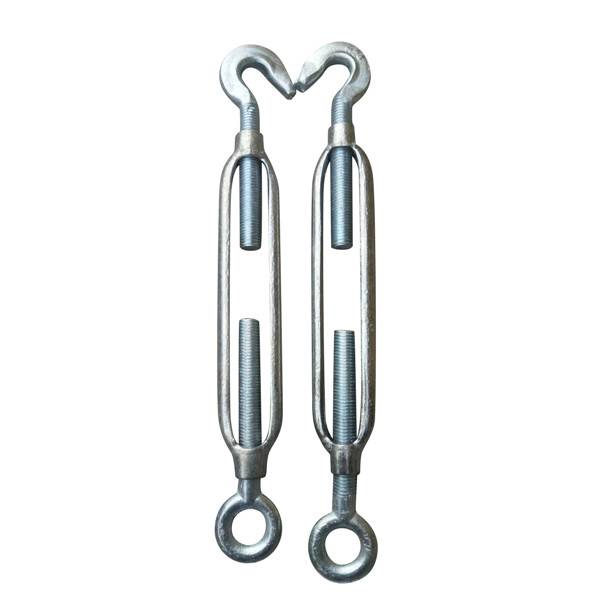Introduction
High precision hoist chains are revolutionizing the way lifting operations are conducted across various industries. These chains are specifically designed to provide exceptional accuracy, reliability, and safety during material handling tasks. By understanding the fundamentals of high precision hoist chains, exploring their advantages, applications, and maintenance practices, we can unlock their full potential and harness their benefits for reliable and efficient lifting operations.
Understanding High Precision Hoist Chains
A. The Basics: What are Hoist Chains?
High precision hoist chains are specialized chains used in lifting equipment and systems. They are constructed with precision engineering, incorporating high-quality materials to ensure strength, durability, and resistance to wear and corrosion. These chains consist of interconnected links that are designed to bear heavy loads and provide smooth movement during lifting operations.
B. Working Principles: How Do Hoist Chains Ensure Accuracy?
The working principles of high precision hoist chains revolve around maintaining precise pitch dimensions, minimizing friction, and controlling elastic elongation. The pitch refers to the distance between each chain link, and strict tolerance control during manufacturing ensures uniformity in pitch, minimizing variations that can affect lifting accuracy. These chains are designed to minimize friction and resistance during operation, allowing for smooth movement and precise load control. Additionally, hoist chains exhibit minimal elastic elongation, which ensures stability and predictability during lifting operations.
C. Key Components: Exploring the Construction of Hoist Chains
High precision hoist chains are engineered with various components that contribute to their exceptional performance. These components include the outer links, inner links, pins, and rollers. The outer links provide structural integrity and connect the chain to the lifting equipment. Inner links are responsible for load bearing and transmitting the lifting forces within the chain. Pins act as the pivot points, connecting the links together, while rollers ensure smooth movement and reduce friction during operation. Each component is meticulously designed and manufactured to meet stringent quality standards and ensure the overall reliability and accuracy of the hoist chain.
Advantages of High Precision Hoist Chains
A. Unmatched Precision: Ensuring Accurate Positioning and Load Control
One of the primary advantages of hoist chains is their ability to provide precise positioning and load control. These chains offer minimal pitch variation, ensuring that the lifting equipment can accurately position the load without deviations. The precise control allows operators to handle delicate or sensitive materials with ease, maintaining the integrity and quality of the goods being lifted.
B. Enhanced Safety: Reducing the Risk of Accidents and Failures
Safety is a top priority in lifting operations, and high precision hoist chains excel in this aspect. They incorporate safety features such as overload protection mechanisms, anti-slip properties, and robust locking systems. These features minimize the risk of accidents, load slippage, and equipment failures, ensuring a safe working environment for operators and preventing damage to the load or surrounding infrastructure.
C. Improved Efficiency: Optimizing Productivity and Minimizing Downtime
High precision hoist chains contribute to improved efficiency in material handling operations. The accurate load positioning and control result in streamlined workflows and optimized productivity. Operators can perform tasks more efficiently, reducing the time required for lifting operations. This improved efficiency translates into increased output, reduced downtime, and enhanced overall operational productivity.

Applications of High Precision Hoist Chains
A. Manufacturing Industry: Streamlining Production Processes
In the manufacturing industry, hoist chains play a crucial role in streamlining production processes. They are used in assembly lines, where they enable precise positioning of components, ensuring accurate and efficient assembly operations. By minimizing errors and deviations, these chains enhance product quality, reduce rework, and improve overall manufacturing efficiency.
B. Construction Sector: Facilitating Heavy Lifting Operations
The construction sector heavily relies on high precision hoist chains for various heavy lifting operations. From erecting steel structures to positioning precast elements or installing large machinery, these chains provide the strength, stability, and accuracy required to handle the demanding lifting tasks in construction projects. They ensure safe and efficient operations, enabling faster project completion and reducing labor-intensive manual lifting.
C. Warehousing and Logistics: Efficient Material Handling Solutions
Efficient material handling is essential in warehouses and logistics centers, and high precision hoist chains offer reliable solutions in this regard. They are used in material handling systems to lift and transport goods, facilitating smooth and efficient processes. These chains enable precise placement of goods, optimizing storage space and allowing for faster order fulfillment, especially in e-commerce warehousing operations where speed and accuracy are critical.
Maintenance and Care of High Precision Hoist Chains
A. Routine Inspections: Identifying Wear and Damage
Regular inspections are crucial to ensure the proper functioning and longevity of hoist chains. Operators should conduct visual inspections, looking for signs of wear, damage, or deformation. This includes checking for elongation, cracks, bent or twisted links, and excessive corrosion. Any issues identified should be addressed promptly to ensure safe and reliable operation.
B. Lubrication and Cleaning: Ensuring Smooth Operation and Longevity
Proper lubrication is essential for maintaining the smooth operation of high precision hoist chains. Lubricants reduce friction between the chain components, minimizing wear and ensuring efficient movement. Regular cleaning of the chains is also necessary to remove dirt, debris, and contaminants that can affect performance. Following manufacturer-recommended lubrication and cleaning procedures will help extend the lifespan of the hoist chains.
C. Proper Storage: Preventing Corrosion and Degradation
When not in use, high precision hoist chains should be stored properly to prevent corrosion and degradation. It is recommended to store the chains in a clean, dry, and well-ventilated area. They should be protected from exposure to moisture, chemicals, and extreme temperatures. Chains should be stored in a manner that prevents tangling or damage, such as hanging them or coiling them on racks specifically designed for chain storage. By implementing proper storage practices, operators can prolong the lifespan of the chains and ensure their performance and reliability when they are needed.
Conclusion
High precision hoist chains have transformed the landscape of material handling and lifting operations. With their unmatched accuracy, enhanced safety features, and improved efficiency, these chains have become the key to reliable and efficient lifting. By understanding the working principles, advantages, applications, and maintenance practices of hoist chains, industries can leverage this technology to optimize their operations, streamline workflows, and ensure the safety of their workers.







